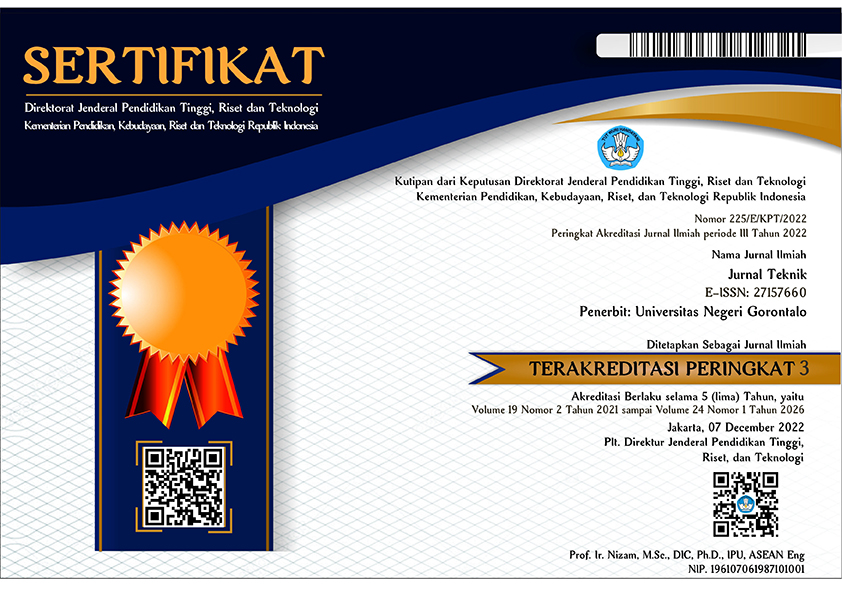Analisis Faktor Dominan Dalam Perencanaan Rumah Bebas Stunting
Abstract
According to existing data, stunting in Pohuwato Regency prevalence is still high, hence the plan for a stunting-free house is needed. The purpose of this study was to determine the description and the influencing factors to find a strategy for planning a stunting-free house. So that the planning of this stunting-free house can fulfill the needs of village development as well as supporting the Pohuwato government stunting-free program. This research is a retrospective study with a case-control design. Data were collected by semi-structured interviews with mothers of children under five using questionnaire sheets. There are 7 (seven) samples in each case group. From the results of the study, it was found that 3 (three) dominant factors were in the houses of stunting sufferers which could be used as a reference for stunting-free house designs. The most dominant indicator is the land indicator in the OC:BC comparison assessment and the use of the front of the house border. The second indicator that is very dominantly influential is the condition of the sanitation system and the height of the floor slab. The third influential factor is user activity with the assessment of natural lighting systems for stunting-free homes.
Downloads
References
Atmaja, J. (2004). Hubungan faktor sosial ekonomi dengan kondisi fisik bangunan rumah tidak sehat di Kecamatan Lubuk Alung. Jurnal Ilmiah R&B, 4(2), 1-10.
Buku Panduan Pembangunan Perumahan dan Permukiman PUPR (2016). Jakarta: PUPR.
Diandra, N., Afla, M. N., & Saputra, M. O. (2020). Tinjauan rumah tinggal berdasarkan konsep rumah sehat menurut regulasi pemerintah. Jurnal Teknologi dan Desain, 1(2), 45-54.
Kemenkes (2011). Peraturan Menteri Kesehatan Republik Indonesia nomor 1077/MENKES/PER/V/2011. Pedoman penyehatan udara dalam ruang rumah. Jakarta: KEMKES.
Kusumawati, I.D., dkk. (2015). Hubungan pengetahuan rumah sehat dan status sosial ekonomi dengan kualitas rumah tinggal penduduk di Desa Rowolaku Kecamatan Kajen Kabupaten Pekalongan. Edu Geography, 3.
Mubarak, W.I. & Chayatin, N. (2007). Ilmu kesehatan Masyarakat: Teori dan aplikasi. Jakarta: Salemba.
Mulyati, A. (2008). Kajian luas rumah tinggal masyarakat berpenghasilan rendah di Kawasan Pusat Kota. Jurnal Smartek, 6(3), 184-192.
Notoatmodjo, S. (2003). Ilmu kesehatan masyrakat. Jakarta: Rineka Cipta.
Tuloli, M.Y. (2018). Indentifikasi dan program peningkatan sistem penyediaan air minum perumahan dan permukiman kumuh di Kota Gorontalo. Jurnal Teknik, 16(1), 49-58.
Zhand, M. (1999). Perancangan Kota Secara Terpadu. Kanisius : Yogyakarta.
Copyright (c) 2021 Nurmiah, Rahmayanti (Author)

This work is licensed under a Creative Commons Attribution-ShareAlike 4.0 International License.













